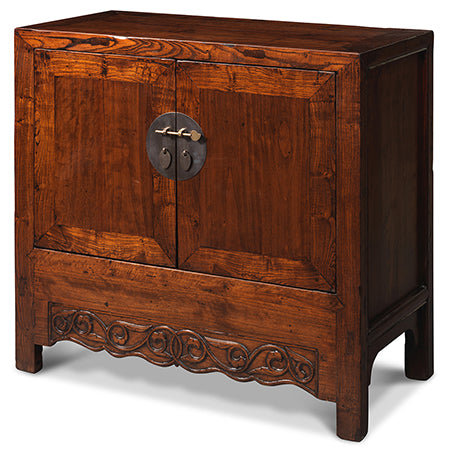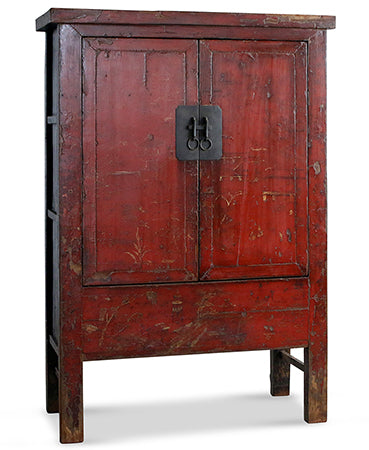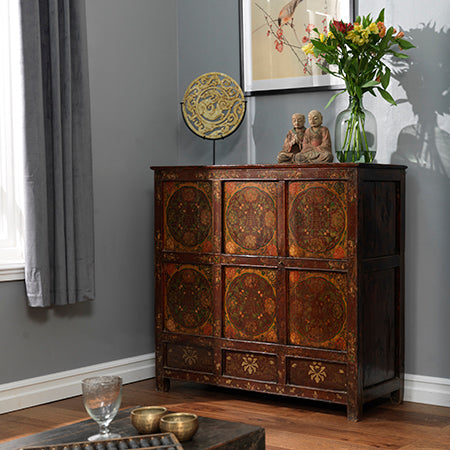
Exploring China’s furniture making traditions, region by region
The world of Chinese antique furniture is a word where history and craftsmanship collide, offering us a fascinating glimpse into China’s rich and diverse cultural heritage. Each piece, whether a delicately carved chair or an imposing cabinet, tells a story of the region it hails from, reflecting the local customs, materials, and craftsmanship. From the sturdy and of often plain designs found in Northern China, to the bamboo and rattan furniture which originates from Southern China’s humid climate, exploring this fascinating country’s furniture making traditions offers a wonderful way to learn more about China and its people.


The beautiful painted cabinets which were produced in the region and presented as part of a bride's dowry provide stunning examples of the artistry and complexity of the Shanxi furniture-making tradition. These wonderful pieces would be richly lacquered and decorated, often in red and gold - colours that represent good luck in China. Paintings on the front would typically show scenes from traditional stories, and would often incorporate auspicious symbols designed to bring wealth and joy to the newlyweds. Butterflies represented long life and happiness in the marrige, whilst pomegranates were thought to bring fertility. These details were painted or picked out with gold leaf applied with a technique known as 'miao jin'.
Moving to the Eastern provinces, particularly around the Shanghai area, and furniture takes on a more ornate and delicate character. This region, historically more affluent and influenced by international trade, saw the incorporation of intricate carvings and inlays into furniture design. The use of rosewood and camphor, prized for their fine texture and aromatic properties, was common, with camphor travel chests offering a wonderful example. The furniture pieces from this area often feature elaborate motifs such as dragons, phoenixes, and other symbols auspicious in Chinese culture, reflecting the region's artistic inclinations and prosperity. In later years the furniture from Shanghai reflected western influences, in particular with the development of a Shanghai art deco style in the 1930s and 1940s.
In contrast, Southern Chinese furniture, particularly from the Guangdong and Fujian provinces, is known for its exceptional craftsmanship in bamboo and rattan, materials abundant in these warmer, more humid climates. The intricate weaving and bending techniques showcase a different aspect of Chinese artistry, one that is deeply connected to the natural environment. This furniture often has a lighter, airier feel, suitable for the southern climate, yet is remarkably strong and durable.

The Western regions of China, with their diverse ethnic groups and unique cultural influences, contribute a distinct flavour to the tapestry of Chinese antique furniture. Tibetan furniture, such as richly decorated Tibetan painted cabinets, is renowned for its vibrant colours and bold, symbolic paintings. These pieces often served not just as functional items but as spiritual symbols, reflecting the deeply ingrained religious beliefs of the region. Many pieces were produced by monks for use in Buddhist temples, including altar tables, prayer tables and storage chests.
In neighbouring Xinjiang province to the north, the main influences were from the central Asian countries on its western border, with large, ornate, heavily carved daybeds having a distinctive, almost Moorish aesthetic. These would be placed centrally in the main living space, with rugs and cushions placed on top to provide warmth and comfort.
Although it’s been something of a whistle-stop tour of Chinese furniture making traditions, we hope we’ve provided you with an insight into the incredible variety and diversity of Chinese furniture making. Thanks to its incredibly long history, varied geography and vast size, China has well and truly earned its reputation for producing some of the most beautiful furniture throughout history, from ornate lacquered pieces, through to simple yet elegant country-style chairs and trunks.





Leave a comment